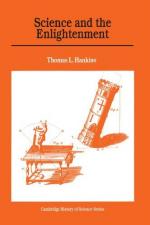|
This section contains 1,293 words (approx. 4 pages at 400 words per page) |

|
Chapter 2, Mathematics and the Exact Sciences Summary and Analysis
At the beginning of the enlightenment there was debate among many scientists whether it would be profitable to pursue pure mathematics. Diderot was one of the most vocal opponents of pure mathematics as a research program during this period. Diderot believed that pure mathematics had reached the limit of its development and scientists should instead turn their attention to the study of descriptive sciences such as chemistry, experimental physics, and natural history. Contemporaries of Diderot, notably, D'Alembert and Condorcet argued that Diderot was wrong and that scientist should continue to develop methods in pure mathematics.
This crisis of faith in the power of mathematics during the eighteenth century was strange given the great advances in mathematics that had recently occurred. Part of what caused this pessimism about the future of mathematics...
(read more from the Chapter 2, Mathematics and the Exact Sciences Summary)
|
This section contains 1,293 words (approx. 4 pages at 400 words per page) |

|




